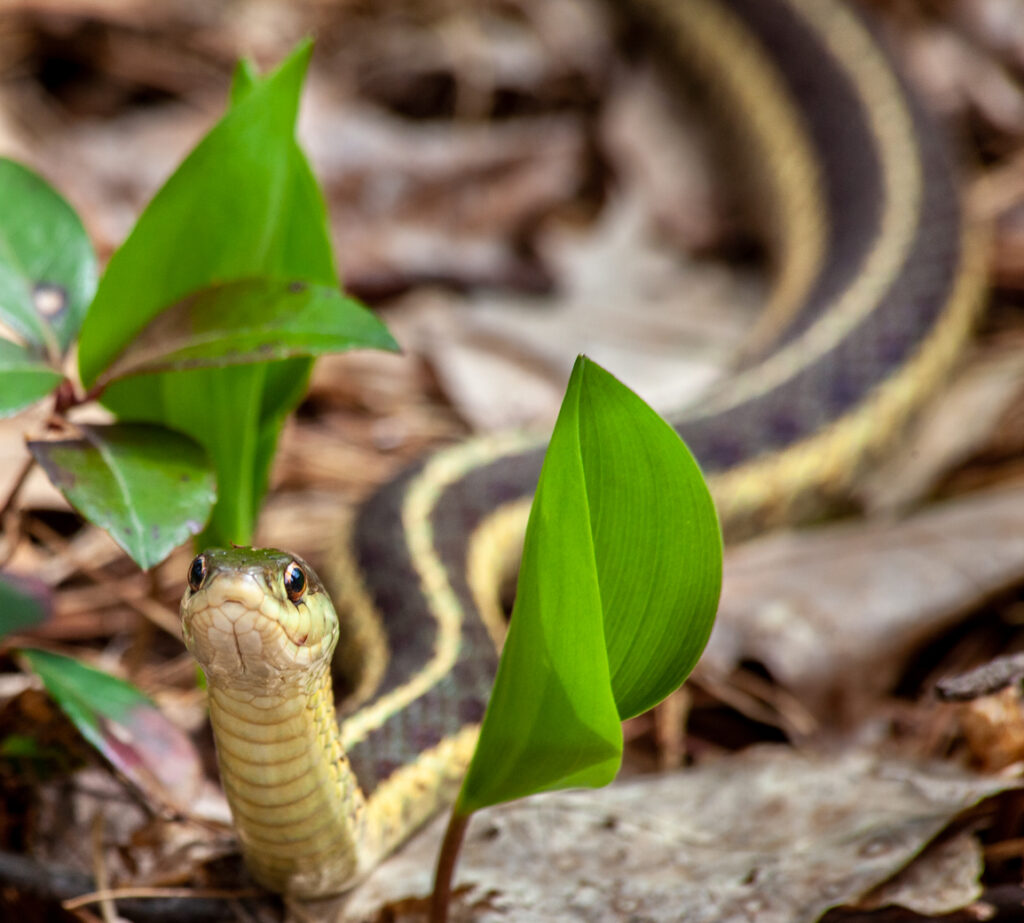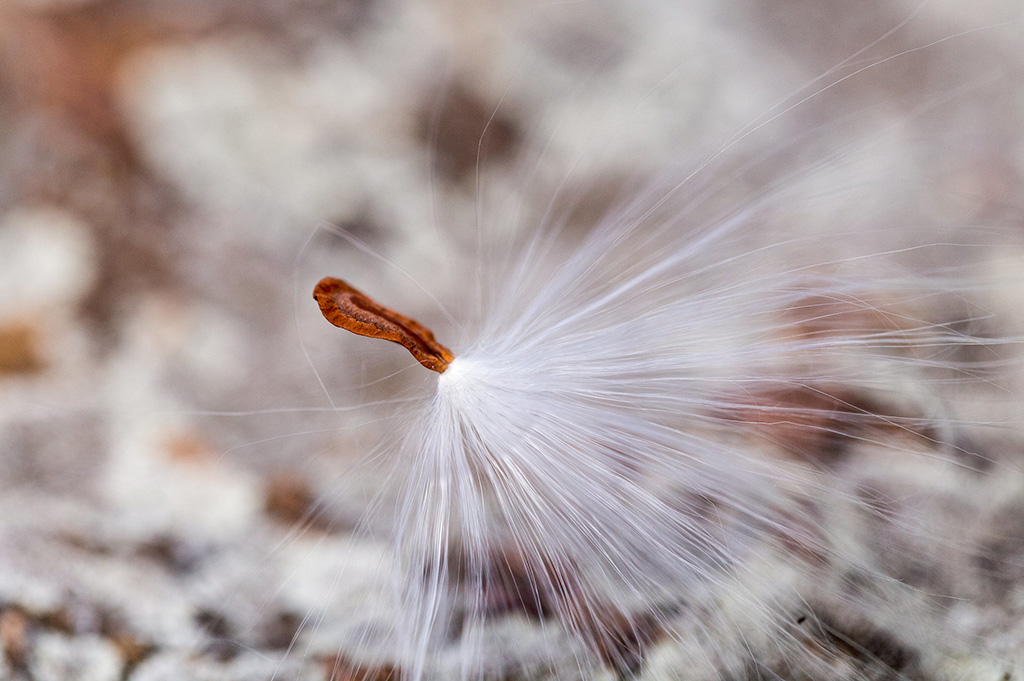They’re cold-blooded, they’re scaly, they have sharp teeth, they’re…beneficial?
Indiana is home to 32 species of native snakes, and even though they are indigenous to the area, they’re not always welcomed by everyone. According to the National Institute of Health, roughly 50% of the population has some sort of anxiety about snakes. And, 2-3% of those people have Ophidiophobia–the extreme fear of snakes.
In fact, research has shown that primates and humans evolved to pick out the image of snakes hiding amongst vegetation. Snake Detection Theory, as it’s called, posits that snakes acted as a source of predatory pressure for early humans. Humans with poorer vision and snake-detecting abilities were more likely to stumble upon a venomous snake and get bitten. In this way, it makes sense why so many people are afraid of snakes – we, to some extent, evolved to be. But consider this: snakes are afraid of us too!
Imagine you’re a snake doing your best to stay hidden, lying motionless and waiting for a little prey animal to walk by and become your dinner. All of a sudden you hear loud, thudding footsteps walking straight towards you. You curl up tighter, hoping your natural camouflage will hide you from its sight. The creature stops, looks straight at you, sees you, and lets out a horrifying scream. Do you try to run? Do you try to fight? You’re paralyzed as the two-legged creature decides what it is going to do to you. For millennia, humans have been spotting camouflaged, motionless snakes doing their best to stay hidden. This means, unfortunately, snakes have long been at risk of being killed by us because of our ingrained fear of them, not because they actually were trying to harm us.
Here in east central Indiana, there is very little chance that a native snake you encounter in the wild will pose a threat to you. Of the 32 species of snakes native to Indiana, only four of them are venomous, and none of them are found in this part of the state. The most likely snakes that one would encounter in east central Indiana are Garter Snakes, Northern Brown Snakes, Black Rat Snakes, and Northern Watersnakes.
Garter Snakes and Northern Brown Snakes are small and are very common; chances are most people have seen at least one. Where Brown Snakes are small and their diet mostly consists of worms, Garter Snakes are slightly bigger and their diets consist in part of mice and shrews. By leaving them be, Garter Snakes will help humans by keeping pest populations down!
Black Rat Snakes can get large, up to 5 feet in length. As the name implies, they are black and they eat mainly rats and other rodents. Although their looks can be intimidating to some, they are completely harmless and are, just like Garter Snakes, beneficial to humans by keeping the rodent population down. If you see a Black Rat Snake in your yard, leave it be, they are doing you a favor by keeping the mice and rats out of your house.
The snake with the most common case of mistaken identity is the Northern Watersnake. People see a snake swimming in the water and their brain might immediately jump to: “Cottonmouth! Venomous snake! Danger!” Contrary to popular belief, Northern Watersnakes are not the same as Cottonmouths and they are not venomous. Cottonmouths (also known as Water Moccasins) are state-endangered, venomous snakes that are only found in this state in one small area in southwestern Indiana. Northern Watersnakes, on the other hand, are nonvenomous and found throughout the entirety of the state.
If you are in Indiana and are not located in southwestern Indiana, the snake swimming in the water is not a Cottonmouth and not a danger to you. Just like Cottonmouths though, Northern Watersnakes just want to eat fish and be left alone.
Just because we evolved to be able to quickly spot snakes does not mean that we need to be the enemy of snakes. Whether a snake is venomous or not, the best course of action when you encounter one in the wild is to leave it alone. Snakes don’t want to attack humans and won’t do so unless provoked. They are beneficial not just to the environment but to humans as well. They are an integral part of the natural food web, and they also keep pest populations down and out of our houses. The “kill or be killed” mindset of our ancestors is something better left in the past.
Natalie Grant is the Stewardship Technician for Red-tail Land Conservancy. Through her work in conservation and restoration, she is dedicated to counteracting negative human impacts on native ecosystems.




